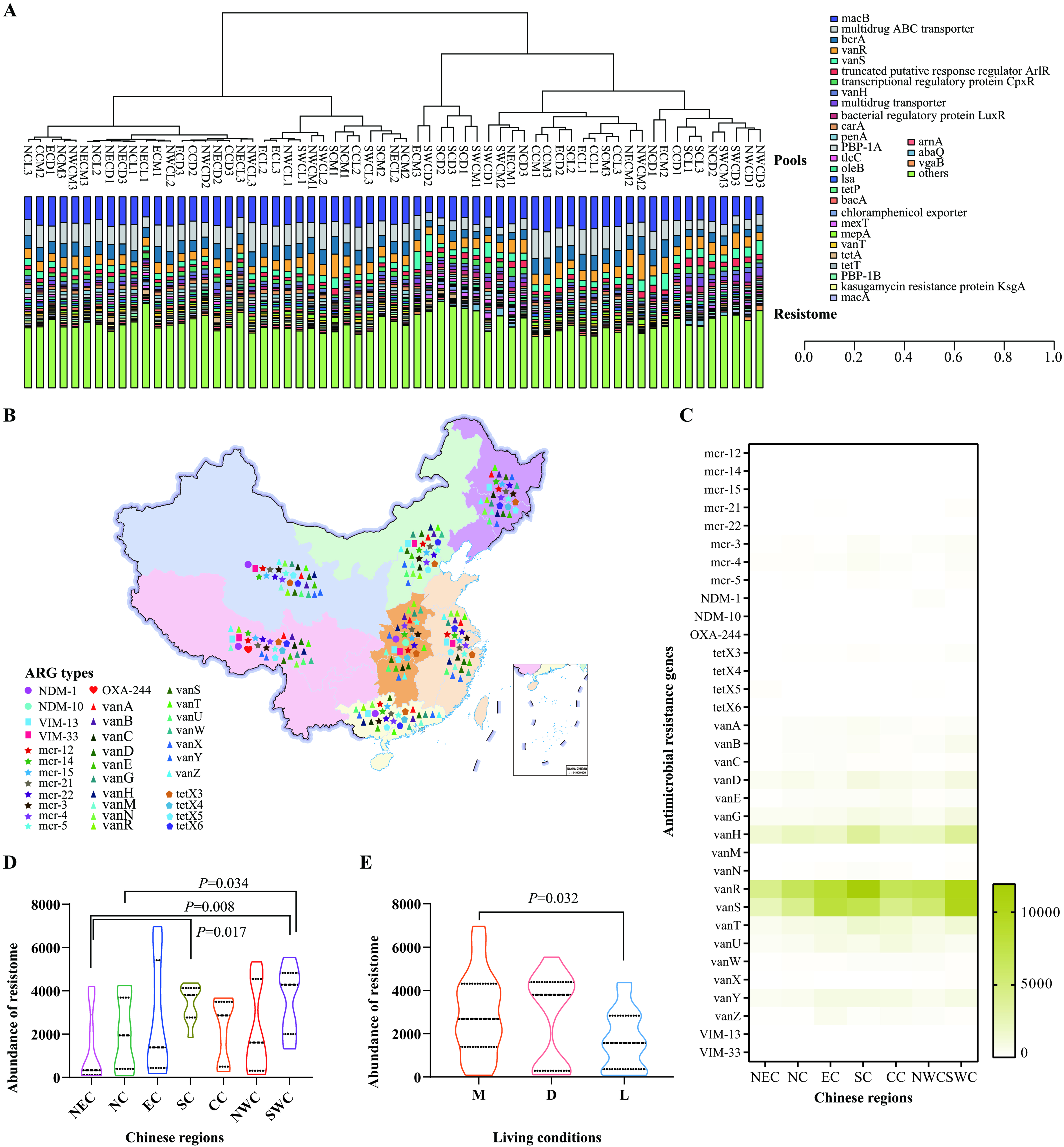fig3
Figure 3. Detection of ARGs in the upper respiratory tract of cats in various Chinese regions. (A) A bar graph displaying the distribution of identified ARGs in the upper respiratory tract of cats across different Chinese regions (Only those with abundances ranking among the top thirty are shown); (B) A geographic map illustrating the detection of ARGs conferring resistance to last-resort antimicrobials (carbapenems, colistin, high-level tigecycline, vancomycin) in samples collected from cats in diverse living conditions in China; (C) A heatmap presenting the abundances of ARGs conferring resistance to last-resort antimicrobials (carbapenems, colistin, high-level tigecycline, vancomycin) in the upper respiratory tract of domestic cats from various Chinese regions; (D) A violin plot demonstrating the abundances of ARGs conferring resistance to last-resort antimicrobials (carbapenems, colistin, high-level tigecycline, vancomycin) in the upper respiratory tract of domestic cats across different Chinese regions; (E) A violin plot showing the abundances of ARGs conferring resistance to last-resort antimicrobials (carbapenems, colistin, high-level tigecycline, vancomycin) in the upper respiratory tract of domestic cats in different living conditions. Mann-Whitney U test was performed to compare the abundances between two groups, using pairwise multiple comparison adjustments according to the Benjamini-Hochberg procedure. The significance level was set at a P value of < 0.05 (*) and P > 0.05 is not marked. Different Chinese regions: NEC - Northeast China, NC - Northern China, EC - Eastern China, CC - Central China, SC - Southern China, NWC - Northwest China, SWC - Southwest China. Different living conditions:










